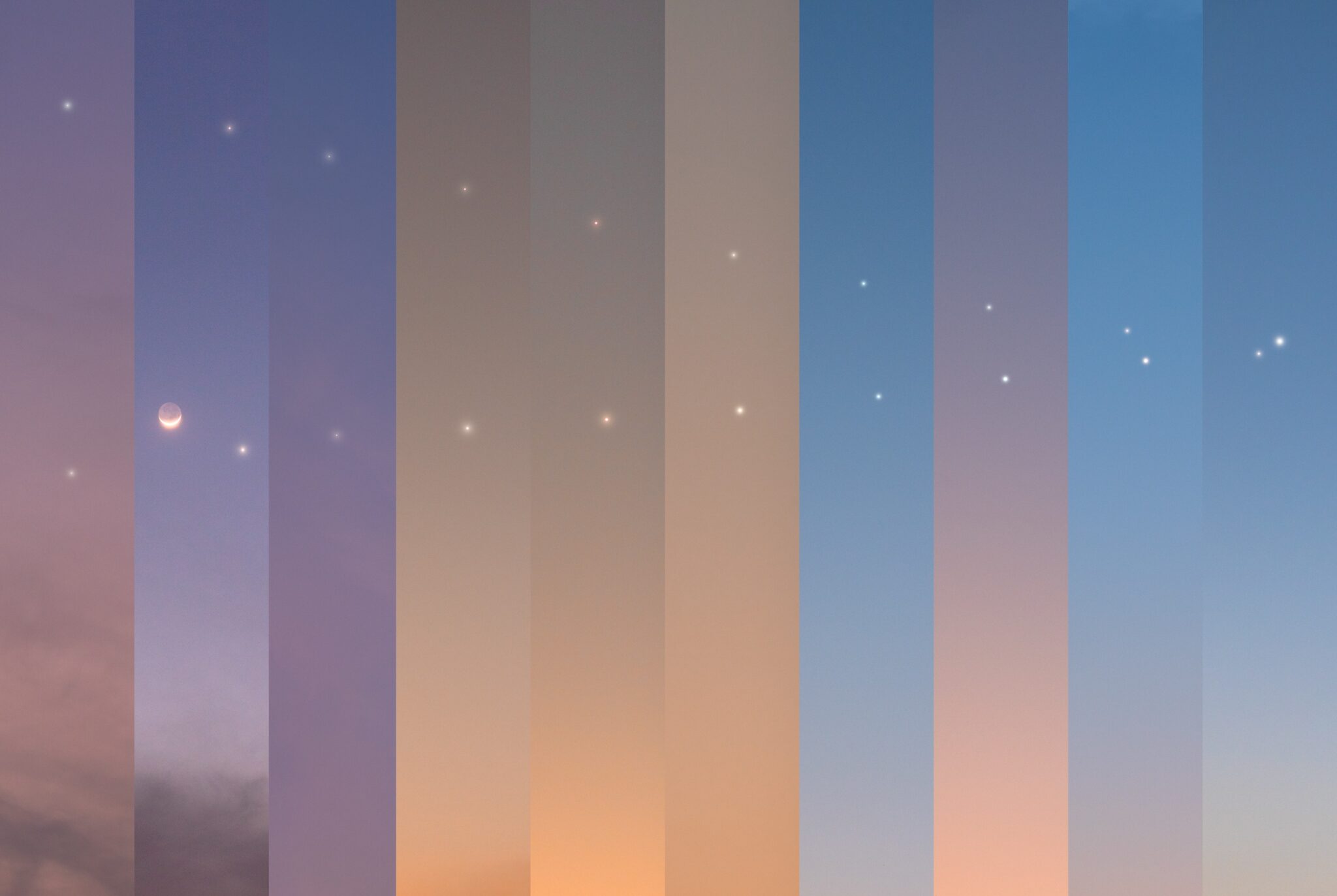The photographer took pictures of Venus and Jupiter for 10 days (timelapse), when they met each other in the night sky and separated at a very short visual distance of half a degree. Although in fact the planets were at a distance of almost 600 million km from each other, for observers on Earth it seemed that the two points were next to each other.

Astrophotographer Soumyadeep Mukherjee was lucky to have 10 clear nights over his home in Dhanbad, India, to create a unique timelapse image showing the cosmic conjunction of Venus and Jupiter. “I always love doing long-term projects with astrophotography that span over a week or month. With the Venus-Jupiter conjunction, I had the same opportunity. Such images always have a surprise element at the end, I never get to know to imagine how the final image would look like,” says the astrophotographer.
Mukherjee started the project on February 21, when Jupiter was at the top, and finished it on March 2, when the gas giant dropped below Venus, where it would soon disappear from view over the horizon, but Venus would remain a bright evening star.
As the astrophotographer explained, he used a Nikon D5600 camera, Sigma 50 mm and a Benro Rhino tripod for shooting. For all images, the aperture was maintained at f/2.8, and the ISO value was 200. The shutter speed varied from 1/3 to 1 second depending on the lighting conditions. All images were taken at the same time — between 06.10 p.m. and 6.20 p.m. local time.
Mukherjee said that he was lucky to record the relative motion of the planets, and he was fascinated by the constant changes in the color of the sky at sunset.
“This shooting was unplanned because I didn’t expect to get 10 days of clear skies in a row. Only after the third day I decided to continue shooting until the end,” Mukherjee comments.
The result of Soumyadeep Mukherjee’s creativity was worth these 10 days — NASA chose the astrophotographer’s photo as the best astronomical picture of the day. More of Mukherjee’s works can be found on his Instagram.
Earlier we reported how the astrophotographer recorded the path of the Sun in the most unusual way during the year.
According to PetaPixel.
Follow us on Twitter to get the most interesting space news in time
https://twitter.com/ust_magazine

